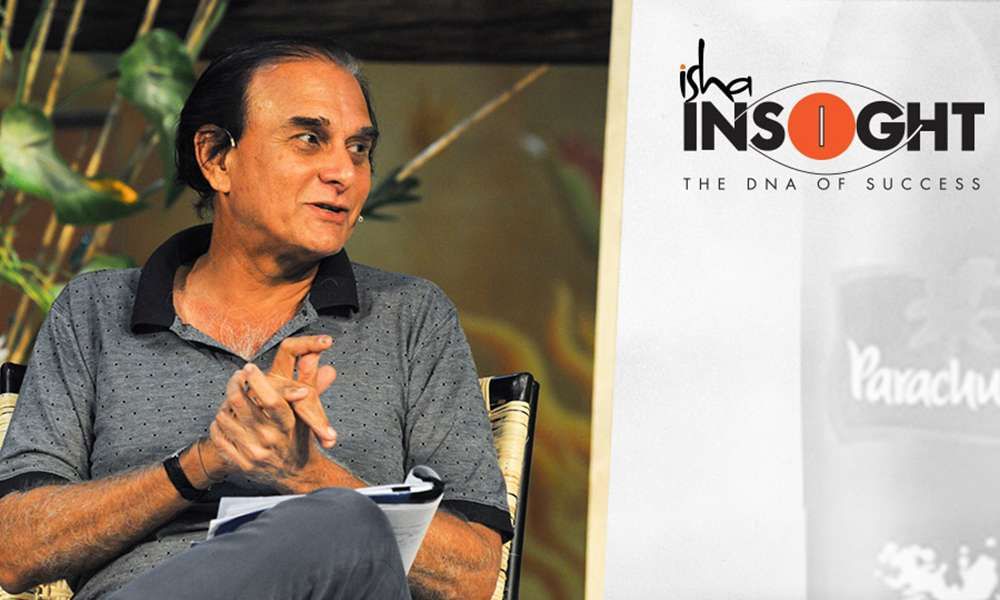Think Outside the Bottle: The Story of Parachute Oil
Marico’s Harsh Mariwala shares the journey and innovations that built up Parachute Hair Oil into a household word in India.

One in three Indians uses a Marico industries product today. Harsh Mariwala, Chairman of Marico, left the cozy cocoon of his oil trading family business at the age of forty to go on and start Marico in 1990. It is one of the largest, most successful players in the consumer products business. One out of every three Indians today uses a Marico product such asParachute, Saffola, Nihar,Kaya and Mediker.
Below is a first-hand account from Mr. Mariwala during INSIGHT 2013. He talks about identifying your product and how innovative ideas and execution helped the Parachute brand leapfrog from a small entity to market leader.
Harsh Mariwala: FMCG stands for Fast Moving Consumer Goods. The biggest asset for an FMCG company is the brand and distribution network. I would prefer not to own a single factory, but would like to sub-contract everything, because that’s not where we add value. We add value in the area of brand building and distribution which is done fundamentally through good talent and innovation. Product identification and product portfolio play a very important role in the success of FMCG companies. It is also known as the defensive sector because even in a recession, the sector does well and it commands very high premiums. In an upturn, we don’t do as well as many other sectors. So, there is high demand for talent within FMCG companies. The penetration is low in many categories so there is huge opportunity for us to increase sales by increasing penetration. And most importantly, we don’t need any permits.
Subscribe
We decided to look into categories where MNCs (multi-national corporations) are not present. One category which we identified was hair oiling. Hair oiling only exists in limited parts, mainly India, neighboring countries and the Middle East. When I meet analysts and those who want to invest in our company, the first thing they ask is, “What is hair oiling?” and then they tell us that this is a dying sector – which is true. But I was very clear that this habit will not die down in India, and we decided to take a big bet on hair oiling. The overall competitive environment was less and our chances of success were much higher. That bet on hair oiling has really paid off. The hair oiling market still grows and we have done a lot of work on the benefits of hair oiling, and our findings are going to be leveraged in future.
We still continue to be excited on hair oils. We entered the Bangladesh market about 10-15 years ago and today we have 80% market share there. We are the largest Indian company in Bangladesh. We get quoted on the Bangladesh stock exchange.
The whole journey of building this brand has been primarily because of innovation and through packaging. For example, when I started working, I’m talking about early ‘80s, coconut oil was sold 100% in tins. We decided to convert the market from tin to plastics. Plastics are cheaper than tins. It is more convenient to pour and more attractive to keep on the shelf, and so we thought it will be very easy for us to succeed. But normally for FMCG, you do a lot of market research before launching a product. The research team came back saying that plastics will not succeed with coconut oil. We got a shock. It seems about 10 years before us, someone else had come in with coconut oil in plastics and they had packed them into square-shaped bottles. They didn’t do a good job in terms of packaging so the oil would ooze out. Then the rats would attack the coconut oil in plastics because they love the plastics and coconut oil combination, and the whole retailer shop would get spoilt.
So, we developed a round-shaped bottle where the rat would find it difficult to get a grip, and packed it in such a manner that not a single drop of oil was oozing out. We took about eight to ten bottles and some rats, and put them in a cage for a few days – no problem!
That really increased our confidence. We took pictures of the cage and gave them to our field force saying “You take these pictures, explain to the traders, ask them to keep three to six bottles first and test it out.” And slowly we were able to break resistance over a period of time. It took almost ten years for us to convert the market from tin to plastics. Plastics cost half the tin cost and we put all that money back into advertising, talking about the benefits of plastics. That pioneering moment from tin to plastic gave us a huge increase in market share. Virtually from 0% market share we became market leaders. Innovation and execution goes hand in hand, it’s not just ideation.
Another example is, at one stage, we had 100 copycats of Parachute and were losing about 20% of our sales to them. So, we designed a certain mold with a foreign mold maker at a very high cost, and the copycats were not able to copy it. Even in the sachet segment, we have one-rupee mini-bottles. We had a low market share in this segment and we thought, “Can we do something in the sachet segment, wherein it looks like a bottle.” So we imported certain machines and packaged it in mini-bottles, and our market share just jumped up. Similarly, in winter, coconut oil freezes, so people would again go back to tins. So we had to design a container with a wide mouth and a spout.
I think the biggest success of parachute is through innovations, and that happened in a category like coconut oil, where there are very limited opportunities for innovation.



